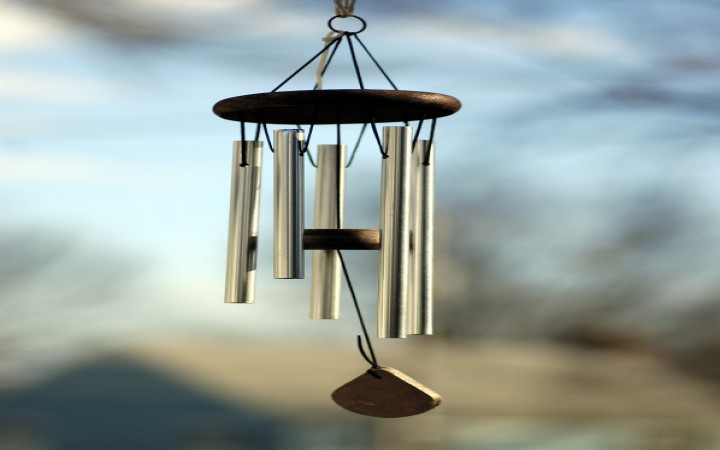As you relax in your hammock in the backyard on a hot summer day, you stare at the puffy, white clouds that float across the deep blue sky. The Sun heats your skin, and you wait for a light breeze to come along to provide some cooling relief.
As a wind finally begins to blow, you relish the cool feeling it leaves on your skin as sweat begins to evaporate. Your skin isn't the only thing enjoying the breeze, though. Your ears pick up the sweet sounds of notes floating on the breeze. Somewhere nearby the wind is playing an instrument built just for it. What are we talking about? A wind chime!
Wind chimes are outdoor decorations that double as musical instruments played by the wind. Most wind chimes feature tubes of varying lengths suspended in a circle from a platform by strings or wires.
When the wind blows, the tubes bump into an object in the center, called a clapper, and against one another. As they do so, the collisions produce vibrations that travel the length of the tubes, producing sound waves at particular pitches depending upon the length of the tube and what material they're made from.
Many wind chimes are made from metals, such as aluminum and copper, and wood. Many other materials can also be used to make wind chimes with unique sounds, including glass, bamboo, seashells, and pieces of pottery.
In general, the larger and longer the tubes are, the lower and deeper the sounds will be. Short, narrow tubes will tend to produce higher pitches. Aluminum wind chimes tend to provide the longest and loudest sounds.
Metal and wooden wind chimes made with specifically-sized tubes can be tuned to particular notes. Wind chimes made out of seashells or glass, on the other hand, can't be tuned to particular notes and may produce a range of sounds from pleasant tinkling to noisy clanging.
Historians believe wind chimes have been around for at least 5,000 years. They have found archeological evidence of wind chimes in Southeast Asia dating back to about 3,000 B.C. These earliest wind chimes were likely made of natural materials, such as bone, wood, bamboo, or seashells.
Why did these ancient peoples invent wind chimes? We can't be sure, but some people believe they were used as part of traditional practices to help ward off evil spirits. Other historians have suggested that they may have also been used to scare away birds and other animals from crops.
Today, wind chimes are popular decorations in gardens and on decks and porches all around the world. They also play an important role in the Chinese practice of feng shui, since many practitioners of feng shui believe a wind chime's materials and sounds can have a positive effect on the energy and mood of a living space.











Sophie
Alex
annfox
stephen
Aaron
mrs.Brights cool student
Mrs.brights student!!!!
C.B Mrs.Bright student
Mrs. Bright's fancy student.
B.G. student
bright student
Jimmy